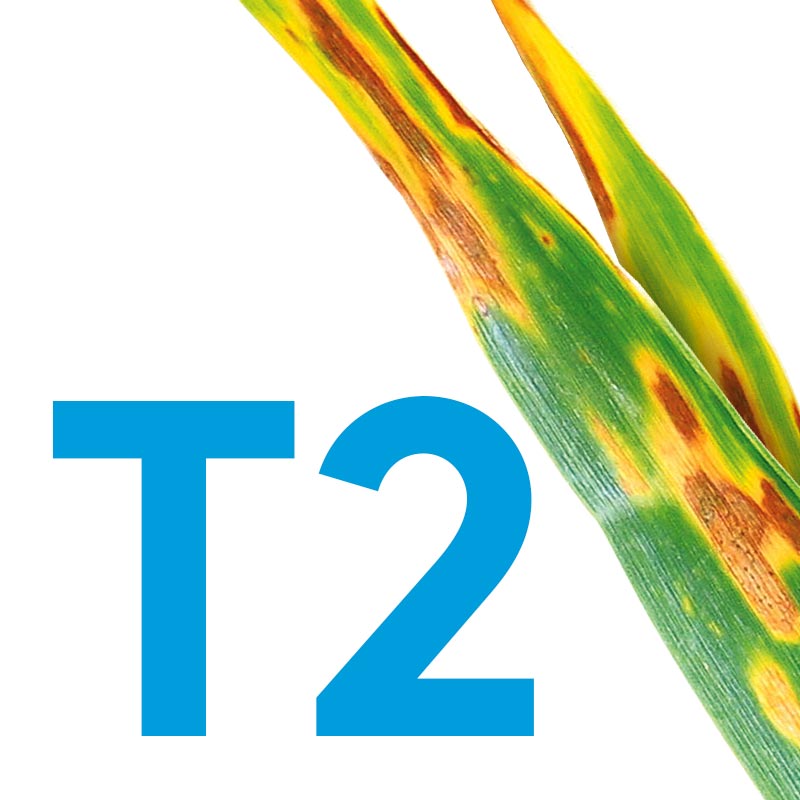2017 - T2: THE Key Fungicide Timing

With crops progressing well – albeit with some starting to suffer from the effects of drought – growers are now turning their attention to T2 applications. This is THE key fungicide timing in terms of response and return on investment: failure to protect the crop from Septoria at this critical time will result in significant yield reductions.
Septoria remains on the lower leaves of many crops, meaning that there is a risk of infection spreading up the plant via rain splash and leaf rubbing in wet and windy conditions, which, after the recent prolonged dry spell, will be welcomed by many growers: under these circumstances a robust T2 spray is the only viable option if adequate protection is to be maintained.
For those crops where T1 sprays were applied early and a T1.5 has not been used, leaf 2 will have been unprotected for a considerable time. Curative kickback could therefore be vital in ensuring any latent infection already present in leaf 2 is controlled.
T2: what should be in the tank?
To provide the very best levels of protection against Septoria, and to safeguard the yield potential of crops which may already be under duress from weather-induced stresses, T2 sprays should include three modes of action: SDHI + azole + multi-site.
Robust rates of both the SDHI and azole chemistries will be required to limit the potential for resistance to develop, with the final product choice and inclusion rate largely dependent on the crop’s ongoing yield potential, variety, rust threat and interval since last spray.
With regards to the multi-site component, opinions vary in terms of the inclusion of chlorothalonil due to it potentially compromising SDHI/azole efficacy. Some agronomists and growers advocate leaving it out in a curative situation and increasing the SDHI/azole doses. Others will leave it in and hope the benefits (Septoria protection & resistance management) out-weigh the negatives.
There is however a third option which will enable growers to maintain strong protection against septoria, manage the risk of resistance and avoid compromising the curative activity of the SDHI and azole modes of action. This option is to use folpet as the multi-site option at T2.
Folpet-based products such as Arizona (straight folpet at 500 g/l) and Manitoba (375 g/l folpet plus 50 g/l epoxiconazole) provide multi-site protection which is less susceptible to the development of resistant Septoria strains. New research even indicates that they can counteract the effects of selection pressure thereby making subsequent Septoria infections more sensitive to epoxiconazole. And as well as combatting fresh and spreading infections of Septoria at T2, folpet also gives good protection against rusts.
 United Kingdom
United Kingdom Select country
Select country




